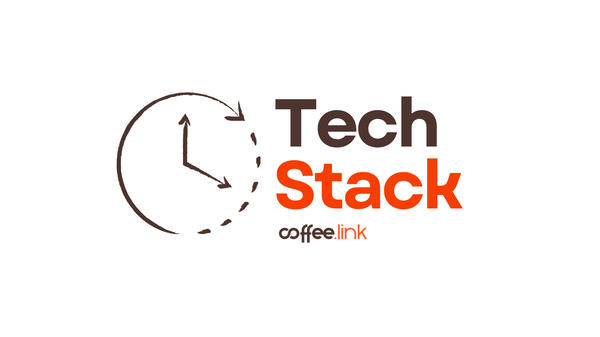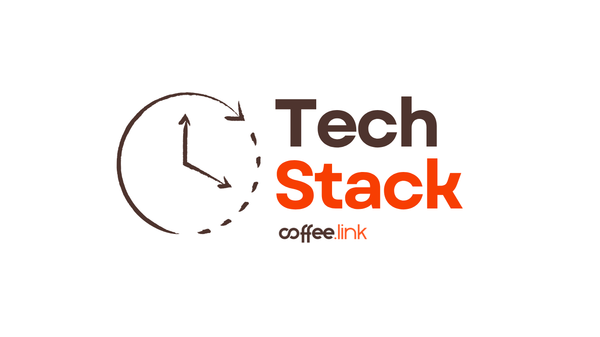While venture capital chases flashy consumer health apps and telemedicine platforms, a more fundamental shift is unfolding in hospital basements and research centers worldwide. Medical imaging—the decades-old practice of seeing inside the human body—is undergoing its most significant technological evolution since the introduction of digital sensors. The convergence of artificial intelligence, novel detector physics, and dramatic hardware miniaturization is reshaping both what we can see and where we can see it.
The implications extend far beyond incremental improvement. Within five years, portable MRI scanners smaller than hospital gurneys may bring diagnostic imaging to rural clinics and developing nations where 4 billion people currently lack access. Photon-counting CT detectors are delivering resolution previously thought impossible while slashing radiation exposure by two-thirds. And deep learning algorithms are compensating for hardware limitations that have constrained the field for decades, fundamentally altering the economics of medical imaging.
Yet this transformation remains largely invisible to the technology industry, despite representing a $50 billion market where engineering challenges rival semiconductor manufacturing in complexity and clinical impact dwarfs most digital health innovations in measurability.
The physics problem that AI is solving
To understand what's changing, start with the fundamental constraints. CT and MRI represent two radically different approaches to seeing inside tissue, each bound by immutable physics.
Computed tomography fires X-rays through the body at 70-140 kilovolt peak energy, measuring how different tissues attenuate the beam. Detectors capture thousands of projections as the X-ray source rotates, and reconstruction algorithms build 3D volumes with 0.5mm spatial resolution—roughly half a poppy seed. The cost of this clarity: ionizing radiation. A chest CT delivers 5-8 millisieverts, equivalent to 18 months of natural background exposure compressed into seconds.
Magnetic resonance imaging eliminates radiation but introduces different trade-offs. Superconducting magnets generating 1.5 to 3 Tesla fields—30,000 to 60,000 times Earth's magnetic field—cause hydrogen protons in tissue to align and precess at specific frequencies. Radiofrequency pulses perturb this alignment; the subsequent relaxation produces signals that encode position and tissue properties. The physics yields exquisite soft tissue contrast unavailable from CT, but spatial resolution suffers: 1-2mm at best, and acquisition times stretching to 30-45 minutes for comprehensive studies.
For decades, these constraints seemed fixed. Better CT resolution meant higher radiation doses. Stronger MRI magnets required more liquid helium, larger bore sizes, and longer scan times. The hardware had reached a plateau defined by superconducting materials, detector physics, and the human body's tolerance for strong magnetic fields.
Then machine learning changed the equation.
"AI reconstruction is fundamentally rewriting the relationship between hardware and image quality," notes the FDA's database of cleared medical devices, which now lists over 950 AI-enabled imaging systems—76% in radiology. Deep learning networks trained on millions of scans can infer details that traditional reconstruction algorithms miss, compensate for noise that would render images undiagnostic, and accelerate acquisitions that previously required patients to hold their breath for 20 seconds.
The practical impact shows in clinical data. GE Healthcare's Sonic DL achieves 12-fold acceleration while reducing scan time by 86%. Philips' SmartSpeed Precise, FDA-cleared in 2024, delivers three-times-faster scanning with 80% sharper images. Siemens' Deep Resolve has become standard across their MAGNETOM platform. Stanford Medical Center reports maintaining diagnostic quality on knee MRI exams shortened from 15 minutes to five—a 50% throughput increase that translates to 30 additional patients weekly per scanner.
But the more profound shift lies in what this computational power enables: new hardware that would have been impossible before.
Hardware innovation at semiconductor scale
Walk into UC Berkeley's Henry H. Wheeler Jr. Brain Imaging Center, and you'll find what may be the world's most sophisticated MRI system. The NexGen 7T scanner, detailed in Nature Methods in 2023, represents a masterwork of gradient coil engineering: three layers of asymmetrically wound copper achieving 200 millitesla per meter strength and 900 tesla per meter per second slew rates—five to ten times conventional systems.
These specifications aren't academic abstractions. They enable 0.35mm functional MRI resolution, sufficient to resolve the six distinct neuronal layers within the brain's 2mm-thick cortex. Neuroscientists can now watch individual cortical columns activate in real time.
The engineering challenges border on the absurd. The gradient coils dissipate over 20 kilowatts—roughly a dozen hairdryers running continuously—requiring stainless steel tube cooling and precision thermal modeling. The rapid magnetic field switching that enables ultra-fast imaging also induces electrical currents in tissue, risking peripheral nerve stimulation. Berkeley researchers conducted threshold studies across 33 participants to map safe operating envelopes. The gradient system alone costs $200,000 to $500,000.
Yet even Berkeley's system relies on 1,500 liters of liquid helium boiling at 4.2 Kelvin to maintain superconductivity in niobium-titanium coils. Helium scarcity and $6-per-liter costs make this approach unsustainable at scale. The environmental absurdity of venting helium during magnet quench events—failures that release the entire cryogenic reservoir as gas—has driven the industry toward sealed systems.
Philips' BlueSeal technology, now in over 1,500 installations, reduces helium volume from 1,500 liters to just seven in a sealed system that requires no refills over the scanner's 15-year lifetime. The reduction saves 40 megawatt-hours annually per scanner. Siemens' approach proved more radical: their 0.55T Free.Star system, FDA-cleared in 2023, operates at half traditional field strength—low enough to use conduction cooling without helium at all. AI reconstruction compensates for the reduced signal, delivering diagnostic quality while eliminating both cryogen costs and RF shielding requirements.
This is the pattern repeating across modalities: AI enables hardware simplification that would have been unthinkable five years ago.
On the CT side, the hardware revolution centers on photon-counting detectors. Siemens' NAEOTOM Alpha series, with FDA clearance expanding through 2024, uses ultra-pure cadmium telluride crystals to directly convert X-ray photons to electrical signals. This eliminates the two-step process in conventional CT, where scintillators first convert X-rays to visible light, then photodiodes convert light to electrical current. Each conversion step adds noise and blurs detail.
Direct detection achieves 0.2mm resolution—2.5 times sharper than conventional CT—while simultaneously capturing spectral information across four energy bins. Different tissues absorb X-rays differently at different energies; photon-counting CT can distinguish materials in a single scan that previously required multiple acquisitions with contrast agents. The detector also produces zero electronic noise, enabling diagnostic imaging at 50-80% lower radiation doses.
The engineering required years of materials science research. Cadmium telluride crystals must be grown defect-free across large areas to avoid K-escape effects where absorbed photons emit secondary X-rays. Charge sharing between adjacent 0.15mm pixels required sophisticated correction algorithms. And pulse pile-up at 10⁹ photons per second per square millimeter flux rates demanded sub-nanosecond timing resolution.
Manufacturing these detectors at clinical scale represents semiconductor-grade fabrication challenges. A complete photon-counting CT system commands $2 to $3 million—double conventional CT—though early clinical data from UCLA and Hospital of the University of Pennsylvania show the resolution improvement enables earlier cancer detection and vascular imaging previously requiring invasive catheterization.
The economics of miniaturization
Perhaps the most striking development arrived with minimal fanfare in 2020. Hyperfine's Swoop portable MRI—a scanner small enough to wheel through standard doorways—received FDA clearance for brain imaging. The device operates at 0.064 Tesla, roughly 40 times weaker than clinical MRI scanners and about twice Earth's magnetic field.
By conventional physics, this should produce unusable images. Signal-to-noise ratio scales with field strength; clinical MRI exists at 1.5T and 3T precisely because lower fields were thought inadequate. But Hyperfine's AI reconstruction algorithms, trained on databases pairing low-field and high-field scans, compensate for the SNR deficit. The result: diagnostic brain imaging at $250,000 per unit versus $1.5 million for conventional MRI, with no RF shielding requirements, standard 110-volt power, and portability that enables ICU bedside scanning.
Yale New Haven Hospital deployed Swoop units in 2021. Over 100 installations now span community hospitals and international sites. The clinical use case focuses on portable applications—ICU monitoring, emergency assessment, surgical planning—rather than replacing high-field diagnostic imaging. But the existence proof matters: AI has broken the field-strength barrier that defined MRI economics for 40 years.
The accessibility implications are substantial. Two-thirds of the world's population lacks access to medical imaging; in sub-Saharan Africa, the ratio reaches one MRI scanner per 3 million people. Conventional scanners require specialized installation—RF shielding, cryogen supply chains, dedicated power infrastructure, and trained operators. Low-field portable systems eliminate most of these barriers.
Whether this translates to improved health outcomes remains uncertain. Medical imaging's relationship to preventative medicine is complex, with ongoing debates about overdiagnosis, incidental findings, and cost-effectiveness of screening asymptomatic populations. But the technology no longer constrains access; distribution and policy do.
The preventative medicine question
This brings us to the field's most contentious current debate: whole-body screening.
Several companies—Prenuvo and Ezra prominent among them—now offer asymptomatic adults comprehensive MRI screening for cancers, aneurysms, and other conditions. A 60-minute scan covering brain to pelvis costs $2,500, searching for over 500 conditions. The pitch: early detection when treatment is most effective.
The medical establishment remains skeptical. A 2019 systematic review in Cureus found that 32% of asymptomatic individuals show incidental findings on whole-body MRI. Many prove clinically insignificant, but each requires follow-up—additional scans, specialist consultations, sometimes invasive procedures—imposing costs, anxiety, and occasionally harm from intervention on conditions that might never have caused symptoms.
Major medical societies have not endorsed asymptomatic whole-body imaging. The evidence for mortality benefit remains sparse. Yet the technology exists, and thousands now receive annual whole-body scans at their own expense.
The NIH appears to be staking out middle ground. Their PRIMED-AI initiative, launched in April 2025 with $50 million in funding, aims to integrate medical imaging with genomics, proteomics, and metabolomics—precision medicine where imaging serves as one data stream among many rather than a standalone screening tool.
The research foundation already exists in radiomics: extracting quantitative features from images that human perception misses. Texture analysis, shape metrics, and intensity histogram statistics—over 200 computed features—can predict treatment response in cancer with 79-95% area under the curve. This isn't futuristic; oncologists today use CT texture analysis to predict PD-L1 expression in non-small cell lung cancer with 82% concordance, guiding immunotherapy selection.
Whether this evolves into population-scale preventative imaging or remains a specialized tool for high-risk populations will depend on factors beyond technology: cost-effectiveness analysis, reimbursement policy, and clinical trial data that may take a decade to mature.
What the next five years brings
The near-term roadmap seems clear from patent filings, FDA submissions, and conference proceedings. Photon-counting CT will expand beyond single-vendor offering as GE Healthcare and Canon Medical Systems bring competing systems to market. Multi-energy imaging may eliminate the need for contrast agents in some applications, removing allergic reaction risks and contraindications in kidney disease.
Ultra-high-field 7T MRI will likely transition from research to clinical deployment as helium-free designs make installation practical outside academic medical centers. The resolution improvements enable applications currently impossible: detecting microstructural brain changes years before Alzheimer's symptoms, or mapping subtle inflammatory markers in autoimmune disease.
Portable and point-of-care imaging will proliferate. Butterfly Network's handheld ultrasound demonstrated the market for imaging-as-a-service rather than imaging-as-capital-equipment. Low-field MRI follows the same trajectory: as AI reconstruction improves, field strength requirements drop, form factors shrink, and deployment expands.
The less certain question is whether artificial intelligence will progress from reconstruction and enhancement to autonomous diagnosis. Over 100 FDA-cleared AI algorithms now flag potential findings—lung nodules on chest CT, intracranial hemorrhage on head CT, pulmonary embolism on angiography. These remain decision-support tools, not autonomous diagnostics. Radiologists review every case.
Whether this remains true in 2030 depends on regulatory evolution, liability frameworks, and validation data more than technical capability. The algorithms exist today. The institutional infrastructure to deploy them at scale does not.
The investment landscape Silicon Valley missed
For technology investors, medical imaging presents an unusual profile. The market is substantial—$41-60 billion globally, growing 5-7% annually—but dominated by established players. Siemens Healthineers, GE Healthcare, and Philips collectively control over 75% of high-end scanner sales. Regulatory barriers are significant; FDA clearance for novel imaging devices typically requires clinical data from multi-center trials.
Yet the AI layer and point-of-care devices have created entry opportunities absent for decades. The FDA cleared 231 AI radiology algorithms in 2023 alone. Many came from venture-backed startups: Arterys (acquired by Tempus), Aidoc, Zebra Medical Vision (acquired by Nanox). The installed base of 50,000+ MRI and 40,000+ CT scanners worldwide represents a retrofit market for software that improves existing hardware—precisely the kind of high-margin, capital-light business software investors understand.
Point-of-care imaging has attracted over $500 million in venture funding since 2020. Hyperfine raised $90 million and completed a SPAC merger at $580 million valuation. Promaxo's portable prostate MRI has raised $40 million. These represent different economics than hospital systems: lower price points, broader markets, and paths to emerging economies where conventional imaging infrastructure will never reach.
The more speculative bet lies in AI-optimized detector design. If machine learning can compensate for hardware limitations, it can also inform hardware optimization—co-designing sensors and algorithms to maximize information extraction per photon or per proton flip. Several academic groups are exploring this direction; commercialization remains years away.
Whether Silicon Valley's attention ultimately matters is uncertain. Medical imaging progressed from analog film to digital sensors to AI-accelerated reconstruction without substantial venture involvement. The advances described here came primarily from established medtech companies, academic research centers, and NIH funding.
What has changed is that these advances now enable applications—portable imaging, low-dose screening, real-time diagnostic assistance—that look more like scalable software businesses than capital equipment sales. The window may be opening. Whether it leads anywhere remains to be seen.
Sources
Technical Foundations:
- NIH: Magnetic Resonance Imaging (MRI)
- FDA: Radiation Risks from CT
- NCBI: CT-scan Image Production Procedures
Hardware Innovation:
- Nature Communications: Low-cost shielding-free ultra-low-field brain MRI
- Scientific Reports: Development of mobile low-field MRI
- PMC: Technical Development of Photon Counting Detector CT
AI & Machine Learning:
- FDA: AI-Enabled Medical Devices Database
- PMC: Hybrid PET/MR and PET/CT Imaging Using Deep Learning
- PMC: Artificial Intelligence-Empowered Radiology Review
Clinical Applications:








